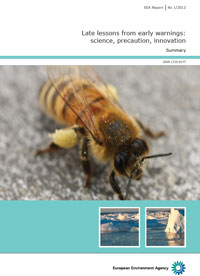 New technologies have sometimes had very harmful effects, but in many cases the early warning signs have been suppressed or ignored. The second volume of Late Lessons from Early Warnings investigates specific cases where danger signals have gone unheeded, in some cases leading to deaths, illness and environmental destruction.
New technologies have sometimes had very harmful effects, but in many cases the early warning signs have been suppressed or ignored. The second volume of Late Lessons from Early Warnings investigates specific cases where danger signals have gone unheeded, in some cases leading to deaths, illness and environmental destruction.
Jan 23rd, 2013
Read more
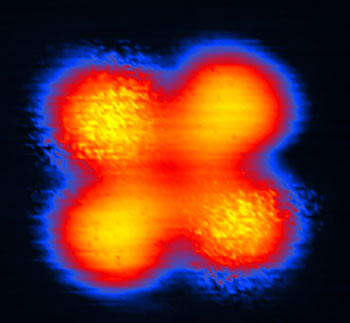 Forscher des Center for Nanointegration (CENIDE) der Universit�t Duisburg-Essen haben eine Technologie entwickelt, Bewegungen einzelner Atome und Molek�le in Echtzeit nachzuverfolgen. Wer ganz still ist, kann die Bewegung der Molek�le sogar h�ren.
Forscher des Center for Nanointegration (CENIDE) der Universit�t Duisburg-Essen haben eine Technologie entwickelt, Bewegungen einzelner Atome und Molek�le in Echtzeit nachzuverfolgen. Wer ganz still ist, kann die Bewegung der Molek�le sogar h�ren.
Jan 23rd, 2013
Read more
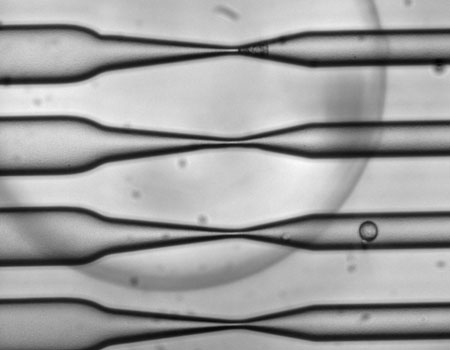 By deforming cells, researchers can deliver RNA, proteins and nanoparticles for many applications.
By deforming cells, researchers can deliver RNA, proteins and nanoparticles for many applications.
Jan 23rd, 2013
Read more
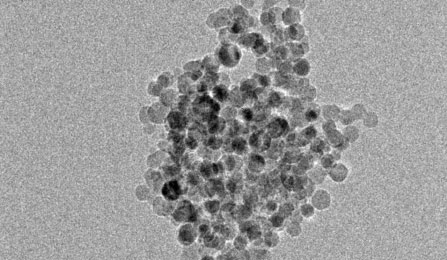 New technology could help power portable devices like satellite phones and radios.
New technology could help power portable devices like satellite phones and radios.
Jan 22nd, 2013
Read more
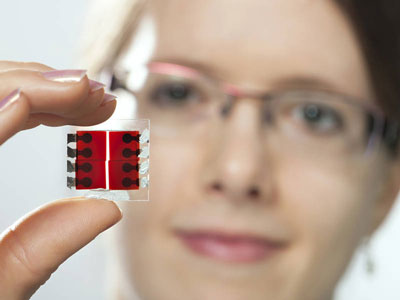 Researchers from Technische Universit�t M�nchen have developed a new generation of image sensors that are more sensitive to light than the conventional silicon versions, with the added bonus of being simple and cheap to produce. They consist of electrically conductive plastics, which are sprayed on to the sensor surface in an ultra-thin layer.
Researchers from Technische Universit�t M�nchen have developed a new generation of image sensors that are more sensitive to light than the conventional silicon versions, with the added bonus of being simple and cheap to produce. They consist of electrically conductive plastics, which are sprayed on to the sensor surface in an ultra-thin layer.
Jan 22nd, 2013
Read more
NIMS announced details of the 11th International Symposium on Nanotechnology (JAPAN NANO 2013), which will be held on Friday, February 1, 2013.
Jan 22nd, 2013
Read more
Researchers at the Aalto University School of Chemical Technology have applied atomic layer deposition (ALD) technique to the synthesis of thermoelectric materials. Converting waste energy into electricity, these materials are a promising means of producing energy cost-effectively and without carbon dioxide emissions in the future.
Jan 22nd, 2013
Read more
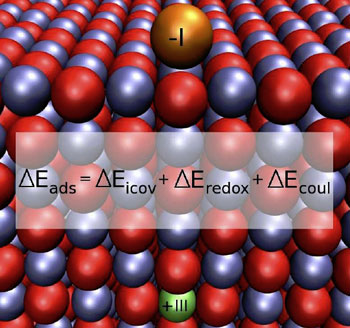 The strong binding of gold on electronically modified calcium oxide can now be understood in detail. In a computational study, researchers have shown how redox chemistry entirely determines the adsorption strength of gold on the modified oxide where one metal atom is replaced with molybdenum.
The strong binding of gold on electronically modified calcium oxide can now be understood in detail. In a computational study, researchers have shown how redox chemistry entirely determines the adsorption strength of gold on the modified oxide where one metal atom is replaced with molybdenum.
Jan 22nd, 2013
Read more
New way to kill lymphoma without chemotherapy.
Jan 21st, 2013
Read more
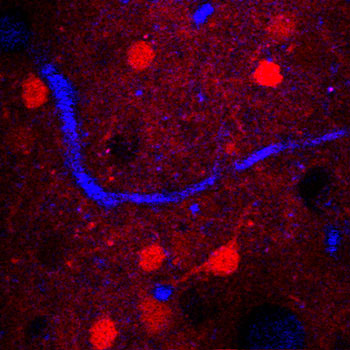 Scientists may be a step closer to cracking one of the world's most compelling mysteries: the impossible complexity of the brain and its billions of neurons. Cornell researchers have demonstrated a new way of taking high-resolution, three-dimensional images of the brain's inner workings through a three-fold improvement in the depth limits of multiphoton microscopy.
Scientists may be a step closer to cracking one of the world's most compelling mysteries: the impossible complexity of the brain and its billions of neurons. Cornell researchers have demonstrated a new way of taking high-resolution, three-dimensional images of the brain's inner workings through a three-fold improvement in the depth limits of multiphoton microscopy.
Jan 21st, 2013
Read more
Recent advances in the field of Raman spectroscopy pave the way for new deep non-invasive medical diagnosis methods. Potential applications include diagnosis of bone disease, cancer and monitoring glucose levels.
Jan 21st, 2013
Read more
A team of investigators from Germany was recently one of the 11 projects to clinch a Synergy Grant out of more than 700 other proposals. Worth more than EUR 10 million, the grant will help them develop new imaging and sensing technologies for single molecules.
Jan 21st, 2013
Read more
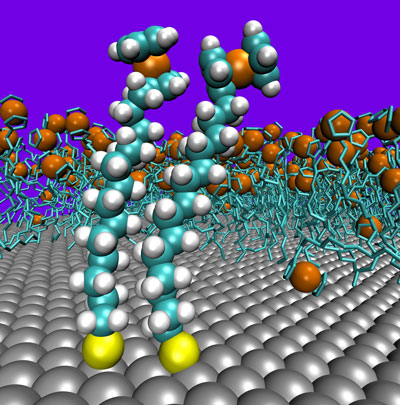 A team of scientists from Tyndall National Institute at University College Cork and the National University of Singapore have designed and fabricated ultra-small devices for energy-efficient electronics. By finding out how molecules behave in these devices, a ten-fold increase in switching efficiency was obtained by changing just one carbon atom.
A team of scientists from Tyndall National Institute at University College Cork and the National University of Singapore have designed and fabricated ultra-small devices for energy-efficient electronics. By finding out how molecules behave in these devices, a ten-fold increase in switching efficiency was obtained by changing just one carbon atom.
Jan 21st, 2013
Read more
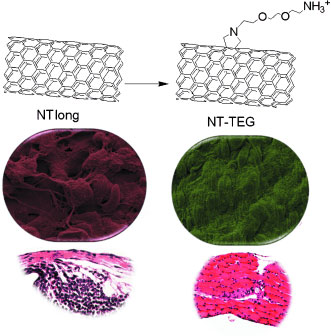 Carbon nanotubes resemble asbestos fibers in their form. Unfortunately, long, pure nanotubes also seem to have asbestos-like pathogenicity. A European research team has now reported that chemical modifications can alleviate this problem if the modification makes their surface more water-friendly and reduces the effective length of the tubes.
Carbon nanotubes resemble asbestos fibers in their form. Unfortunately, long, pure nanotubes also seem to have asbestos-like pathogenicity. A European research team has now reported that chemical modifications can alleviate this problem if the modification makes their surface more water-friendly and reduces the effective length of the tubes.
Jan 21st, 2013
Read more
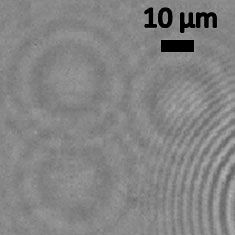 By using tiny liquid lenses that self-assemble around microscopic objects, a team from UCLA's Henry Samueli School of Engineering and Applied Science has created an optical microscopy method that allows users to directly see nanoscale objects.
By using tiny liquid lenses that self-assemble around microscopic objects, a team from UCLA's Henry Samueli School of Engineering and Applied Science has created an optical microscopy method that allows users to directly see nanoscale objects.
Jan 21st, 2013
Read more
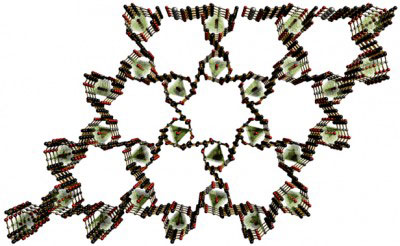 Reseaerchers have developed a highly-porous Metal Organic Framework (MOF) that, almost uniquely, is stable and able to filter substances in water.
Reseaerchers have developed a highly-porous Metal Organic Framework (MOF) that, almost uniquely, is stable and able to filter substances in water.
Jan 21st, 2013
Read more
 New technologies have sometimes had very harmful effects, but in many cases the early warning signs have been suppressed or ignored. The second volume of Late Lessons from Early Warnings investigates specific cases where danger signals have gone unheeded, in some cases leading to deaths, illness and environmental destruction.
New technologies have sometimes had very harmful effects, but in many cases the early warning signs have been suppressed or ignored. The second volume of Late Lessons from Early Warnings investigates specific cases where danger signals have gone unheeded, in some cases leading to deaths, illness and environmental destruction.










 Subscribe to our Nanotechnology News feed
Subscribe to our Nanotechnology News feed